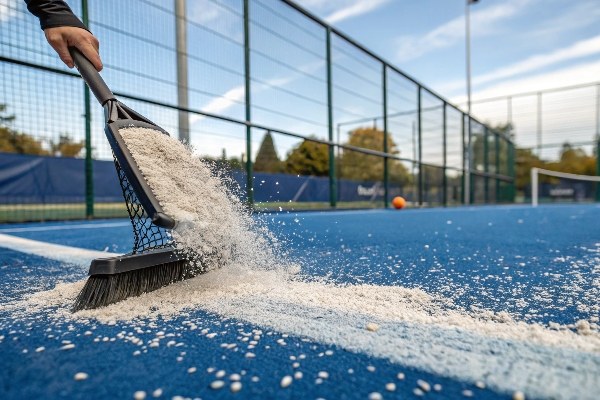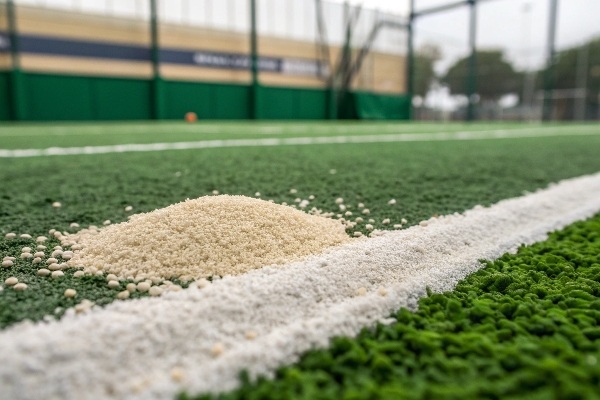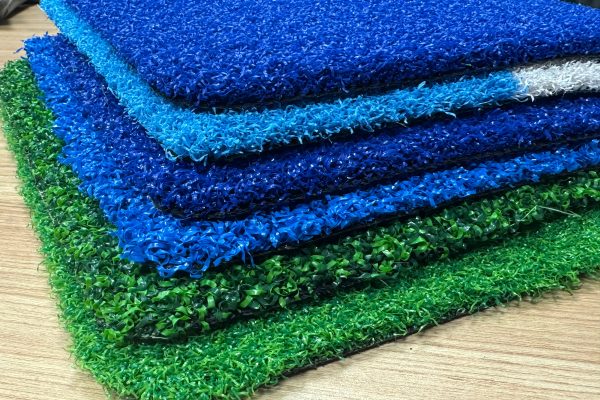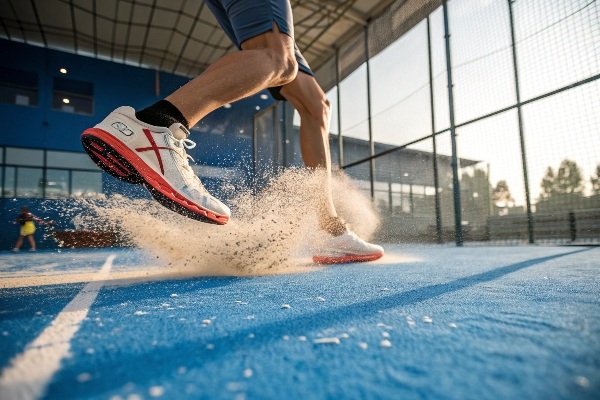Your new padel court feels wrong, and players are complaining. Your expensive investment might be failing. The problem is often a simple one: the sand infill.
Silica sand is crucial for padel courts with artificial turf. It supports the grass fibers, creates a stable playing surface, controls ball bounce, improves player grip, and protects the turf from wear and UV damage, making the court last much longer.

I’ve spent years in the artificial turf industry, from the factory floor to managing international sales. I’ve seen countless court installations. Many people think the sand is just a small detail, but it’s the heart of a great padel court. Forgetting or skimping on sand is a costly mistake. Let’s explore why this material is so important. Understanding this will help you deliver perfect results for every project you undertake.
Why do they put sand in padel courts?
Are you worried your new padel court will wear out too quickly? Without proper infill, the turf fibers will flatten and get damaged fast. Sand is the simple solution.
Sand is added to padel courts as an essential infill. It holds the artificial grass blades upright, provides a consistent playing surface for a good game, helps with drainage, and protects the turf from damage. This makes the court safer and more durable.

When I first started as a turf engineer, I learned that a turf system is more than just the carpet. The infill is just as important. For padel, sand does several vital jobs at once.
Structural Support for Fibers
The sand acts as a ballast. It settles down between the artificial grass fibers and holds them in an upright position. Without sand, foot traffic and play would quickly flatten the fibers. Flat fibers not only look bad, but they also wear out unevenly and much faster. I remember a client who wanted to save a little money by using less sand. Within a year, the baseline areas were completely flat and worn through. They had to pay for a big repair. The sand keeps the turf resilient and ready for play.
Consistent Playability
Padel is a fast game that depends on a predictable ball bounce1. The sand infill2 is what provides this consistency. It creates a firm, even surface. This allows the ball to bounce at a regular height and speed across the entire court. It also gives players the right amount of grip and slip for quick movements and slides.
| Feature | Court With Sand | Court Without Sand |
|---|---|---|
| Fiber Position | Upright and Supported | Flat and Matted |
| Ball Bounce | Consistent and Predictable | Low, Fast, and Unpredictable |
| Player Traction | Optimal Grip and Slide | Slippery, High Risk of Injury |
| Durability | High | Very Low |
| Drainage | Good | Poor, Water Pools on Surface |
What is the best material for a padel court?
Choosing the right materials for a court can feel confusing. A wrong choice leads to expensive fixes and unhappy clients. You need to know the best combination for success.
The best material for a modern padel court is a system. This system combines high-quality artificial turf, usually monofilament, with a specific type of infill: rounded silica sand3. This combination gives the best durability, safety, and performance.

Building a great padel court is like baking a cake. You need the right ingredients mixed in the right way. The two main ingredients for the surface are the turf and the sand.
The Artificial Turf
The "grass" itself is the first major component. In my experience helping customers grow their business, choosing the right turf is the first step toward a quality installation. Today, most high-performance padel courts use artificial turf, not concrete or other hard surfaces. This is because turf is safer for players’ joints.
| Turf Type | Pros | Cons | Best For |
|---|---|---|---|
| Monofilament | Very durable, looks natural, excellent resilience. | Can be more expensive, sand moves a bit more. | High-traffic clubs, professional courts. |
| Fibrillated | Holds sand in place well, often cheaper. | Less durable, fibers can split over time. | Private courts, lower-traffic areas. |
| Textured | A type of Monofilament, excellent sand retention, top performance. | Most expensive. | World Padel Tour level courts. |
For most professional projects, I recommend a high-density monofilament turf. It lasts longer under heavy play and looks better for years.
The Infill Material
The second key ingredient is the sand. We use silica sand because it is hard, durable, and doesn’t break down easily. But not all silica sand is the same. I always tell my clients to demand rounded-grain silica sand. Angular or sharp sand acts like sandpaper. It will slowly cut and grind away at your turf fibers every time someone plays on the court. Rounded sand is gentle on the turf fibers, which significantly extends the life of the court surface.
What is the best surface for a padel court?
Players are complaining about the court surface. The bounce is weird and footing feels unsafe. The game is ruined. The right surface is key to player satisfaction.
The best surface for a padel court is artificial grass made specifically for padel, correctly filled with silica sand. This surface gives players the perfect grip for fast turns, a consistent ball bounce, and great shock absorption to help prevent injuries.

The "best" surface is all about the player’s experience. It needs to be safe, consistent, and fun to play on. This is achieved through the interaction between the ball, the player, and the surface itself. Artificial grass with sand infill masters these interactions better than any other option.
Ball-Surface Interaction
How the ball reacts to the surface is everything. On a good padel court, the ball should have a lively but predictable bounce. The sand infill on an artificial turf court slows the game down just enough compared to a hard court. This allows for longer rallies and a more strategic game, which is the essence of padel. The amount of sand is critical. I once helped a client in Mexico adjust his sand levels. We tested different amounts until we found the perfect bounce for the local style of play. Generally, the sand should be filled to where the tips of the grass fibers are still exposed.
Player-Surface Interaction
Safety and comfort are vital. Players need to trust the court to move freely. A sand-infilled turf surface provides a great balance. It has enough grip for explosive starts and stops. It also has just enough give to allow players to slide into a shot, reducing stress on their knees and ankles. Hard courts can be very punishing on the body.
Here is a quick comparison:
| Surface Type | Ball Bounce | Player Comfort | Maintenance |
|---|---|---|---|
| Concrete | Very Fast, High | Low (Hard on Joints) | Low |
| Clay | Slow, High | High | Very High |
| Artificial Grass | Medium, Consistent | High | Medium |
For a business owner, artificial grass offers the best balance of performance that players love and a durable system that protects your investment.
Conclusion
Silica sand is not just an accessory; it is essential for a padel court’s performance, safety, and lifespan. Getting the turf and sand combination right guarantees a superior court.
_画板-1.png)
_画板-1.png)